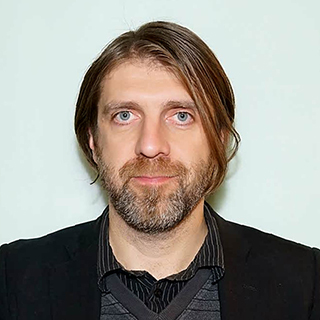Cornelius is the founder of Canadian UX consultancy Ampli2de Inc., where he explores his fascination with the politics of design while leading enterprise-scale experience and service design projects. Over the past 15 years, he managed a number of large UX teams as UX practice leader at Deloitte Canada and Shaw Communications, and has consulted in a wide range of industries, from technology to financial services, healthcare, enterprise risk management and law. He is also the Founder, Co-chair and Creative Director of the popular CanUX conference, Canada’s largest and longest running annual UX event. A self proclaimed night owl (he is originally from Transylvania), Cornelius loves red eye flights and is a nomad at heart. You can reach him on twitter @corneliux.
23
09:00 - 12:30
Aud II25
09:00 - 12:30
Room 2Workshop
Mapping Multi-Channel Ecosystems
In today's world, we’re dealing with ever expanding multi-device multi-screen multi-service ecosystems across multiple channels. Most of these ecosystem profiles have their own user behaviours, user needs, interaction models and design patterns. As design leaders, is there something we can do to better understand the big picture? In this half day workshop you’ll learn about the importance of initially focusing your design practice on the overall service ecosystem rather than the small design details that are a byproduct of the constant switching of products and channels. Understanding an ecosystem is not (just) about visualizing and diagramming it. Being able to identify and apply the right lenses to the visual representation can become a key sensemaking tool in shaping the overall business and customer experience strategy. You'll also learn that alongside solid research, facilitation and collaboration are the other key ingredients to the success of an ecosystems mapping exercise.
What topics will be covered?
- Core concepts of systems thinking and how it differs from our traditional ways of representing and understanding complexity.
- High-level framing, and its importance in identifying the initial scope of an ecosystem.
- The most common types of ecosystems and a methodology for ecosystems mapping.
- You'll also learn that alongside solid research, facilitation and collaboration are the other key ingredients to the success of an ecosystems mapping exercise.
What exercises will be done?
Throughout the workshop, a combination of presentation, discussion, and hands on work will be used to tackle an ecosystem you're involved with. Participants will work in groups (6-8 per table) towards conceptualizing a service ecosystem map.
Specific exercises include:
- Identifying primary and secondary ecosystem actors
- Drawing rich pictures of the ecosystem
- Grouping primary service clusters
- Visualizing the ecosystem map by expanding it
- Identifying and applying ecosystem lenses
What will the audience take away from this workshop?
At the end of this workshop you should have a better grasp of systems thinking, and how ecosystems fit in your overall customer experience strategy. You'll also acquire the the basics required to facilitate an ecosystems mapping exercise in your organization.
Any requirements for attending?
This material is best suited for design, product and business leaders looking to add new techniques derived from systems thinking to their method toolbox. The workshop assumes some prior exposure to visual design thinking and a basic understanding of service design, though neither of those is a prerequisite.
25
11:25 - 12:00
Auditorium ITalk
Practical Jobs To Be Done: A Way Of Seeing
The concept of jobs to be done provides a lens for understanding value creation. It’s straightforward principle: people “hire” products to fulfill a need.
For instance, you might hire a new suit to make you look good at a job interview. Or, you hire Facebook to stay in touch with friends. You could also hire a chocolate bar to relieve stress.
Viewing customers in this way – as goal-driven actors in a given context – shifts focus from the psycho-demographic aspects to needs and motivations. Although the theory of JTBD is rich and has a long history, practical approaches to applying the approach are largely missing.
In this presentation, I will highlight concrete ways to apply the jobs to be done in your work. This will not only help you design better solutions, but also enable you to contribute to broader strategic conversations.














